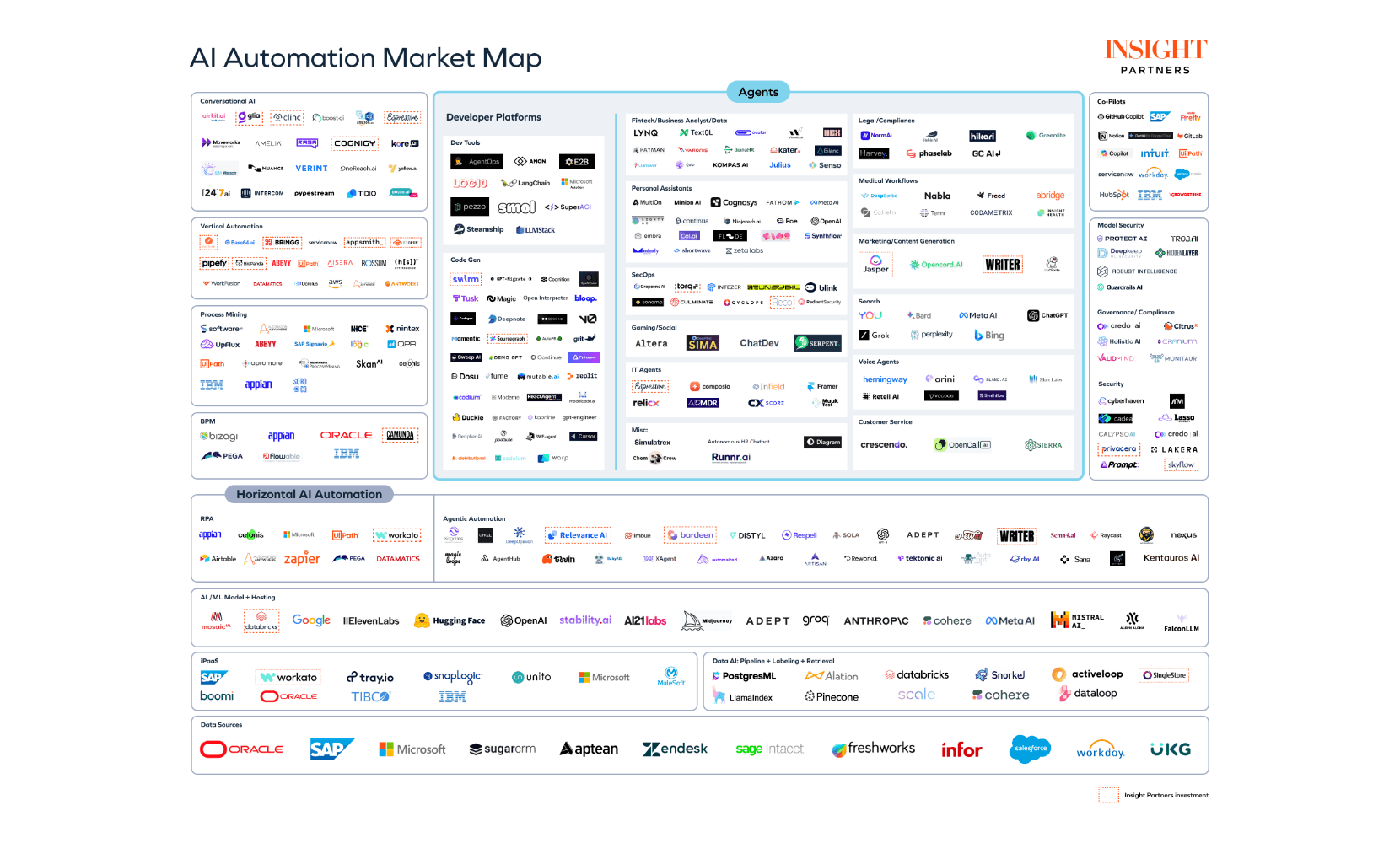AI Agents are disrupting automation: Current approaches, market solutions and recommendations

🌈 Abstract
The article discusses the evolution of automation in the age of AI, tracing the journey from early automation efforts to the current state of AI-powered automation platforms. It explores the different approaches taken by incumbents, startups, and AI providers in leveraging generative AI (genAI) to enhance automation capabilities. The article covers the key trends, challenges, and considerations for enterprises and builders in deploying and developing AI-powered automation solutions.
🙋 Q&A
[01] Evolution of Automation Platforms
1. What are the key types of automation platforms discussed in the article?
- Robotic Process Automation (RPA) platforms that automate repetitive manual tasks
- iPaaS (Integration Platform as a Service) platforms that create a middleware layer to integrate data, applications, and APIs
- Low-Code Task Automation platforms that offer a predefined set of integrations and a simple UI to automate repetitive tasks
- Vertical Automation approaches focused on specific workflows in domains like supply chain, IT operations, developer ecosystem, and customer service
2. How have these platforms evolved with the advent of generative AI?
- Incumbents are incorporating genAI capabilities to simplify user experience and offer new automation workflows
- Examples include translating natural language task descriptions into automation templates, generating code for automations, and extracting data from unstructured sources
[02] Agentic Automation Frameworks
1. What are the key differences between Copilots and Agents as discussed in the article?
- Copilots are genAI-based interfaces that offer users simplified ways to discover and augment features of existing applications and platforms
- Agents combine LLM capabilities with code, data sources, and user interfaces to execute workflows, with different approaches like simple wrappers around LLMs or more complex "Mixture of Experts" architectures
2. What are the key components of the "Mixture of Experts" Agent architecture?
- User interface that enables task description and provides context to the Agent
- Task Agents specialized for different functions like planning, routing, code generation, and reflection
- Deterministic runtime to ensure consistent and reliable outputs
- Mechanisms for grounding Agents in user context and enabling human-in-the-loop interaction
[03] Considerations for Enterprises and Builders
1. What are the key considerations for enterprises deploying automation with AI?
- Evaluating the cost-benefit of genAI-based automation compared to existing approaches
- Importance of clean and focused data sets to ground the AI models
- Navigating the evolving LLM landscape and choosing the right models for their use cases
- Establishing clear performance measures and governance/security protocols
2. What are the key considerations for builders developing AI-powered automation solutions?
- Adopting a "crawl, walk, run" approach and deeply understanding the user, use case, and performance benchmarks
- Leveraging LLMs where needed and complementing them with predefined functions, ML models, and the right "scaffolding"
- Innovating on user interfaces to enable more interactive and multimodal experiences
- Ensuring differentiated data sets and addressing safety, security, and compliance requirements